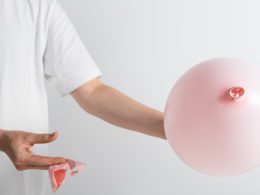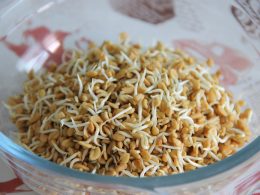Table of Contents
About Hypertension
All the body cells need energy for their functioning. This energy is acquired by oxygen and nutrients which are supplied through blood circulation. The heart pumps nutrient and oxygen-rich blood to all body parts. This blood to reach all body parts it has to be pumped with some pressure.
The pressure shown by the blood on the walls of arteries during pump from the heart is called blood pressure. If this blood pressure stays higher than the normal for a long time then it is called Hypertension (high blood pressure).
The normal blood pressure ranges from 120/80.
- 120- Represent the systolic blood pressure.
- 80- Represent the diastolic blood pressure.
Systolic blood pressure refers to the pressure of the blood on the blood vessels during the heartbeat. Diastolic blood pressure refers to the pressure of on the vessels during relaxation.
Hypertension refers to the condition of the condition where both systolic and diastolic blood pressures are very high.
Causes of hypertension
Kidney diseases, thyroid diseases, etc may result in hypertension. Hypertension mainly results due to the narrowing of arteries due to which blood flows with high pressure. Medicines used for asthma and cold may also result in hypertension.
Usage of birth control pills and pregnancy are the main reasons for hypertension in women, in some cases. Heredity and too much stress may also result in hypertension.
Smoking, consumption of alcohols, taking a high amount of sodium salts, etc may also result in hypertension. Old people are more prone to hypertension. Obesity also leads to hypertension.
Symptoms of hypertension:
As the symptoms of hypertension are very similar to common illness, most of the people unknowingly suffer from hypertension.
The symptoms include:
- Problems invisibility
- Weakness
- Frequent headaches
- Bleeding of nose etc.
One shouldn’t neglect these symptoms and should have frequent checkup. Hypertension if not diagnosed properly may lead to heart strokes and kidney problems.
Hypertension is called a silent killer as it causes a lot of damage to the patient by the time he/she becomes aware of it.
Yoga for hypertension

Hypertension cannot be completely cured but can be prevented and controlled by practicing yoga daily.
The pressure of blood is controlled by yoga as it stabilizes the sympathetic and parasympathetic nervous system.
By practicing yoga poses and breathing techniques alternately, changes like increased energy levels and increased immunity can be noticed.
Yoga that is to be practiced by people suffering from hypertension mainly includes forward bends.
Uttanasana yoga for hypertension:
Stand straight by leaving a gap of feet between the foot. See that the feet are parallel to each another and breathe in deeply. Exhale slowly and bend till head touch knees and with the help of hands, legs are held. Relax in this pose for some time by breathing slowly. Be in this pose as long as you can and come out of the pose if any discomfort is felt.
Adho Mukha Svanasana
Come to the position with knees and hands on the floor. The gap is maintained between the knees and fingers of palm are spread. Exhale and the knees are lifted from the ground and the heels are also slightly lifted. Now the heels are bent towards the floor and the sit bones are pulled up towards the ceiling. Slowly inhale and exhale through the belly. The pose can be continued until the lengthening of the back is felt.
Supta Baddhakonasana
This asana is more useful for people with high blood pressure and pregnancy.
Lie down on the back by bending knees. Soles of the feet are brought together. Now try to bring soles as close as possible to the body. Try to stay in this pose as long as you can and exhale and inhale for a couple of times.
- Pranayama Breathing Exercises for Hypertension
- Pranayama involves controlled breathing.
Bhramri Pranayam – Yoga for Hypertension
Both the ears are closed with thumbs and index fingers are positioned on the forehead. The other three fingers are positioned on the base of nose touching eyes. Exhale and inhale through the nose by making the sound of a bee. This pranayama should be practiced at least for ten minutes.
Udgeet Pranayam -Yoga for Hypertension
Inhale deeply and make a sound of Om. This should be practiced at least for ten minutes. The other pranayama like Anulom Vilom, Bhastrika can also be practiced for hypertension.















